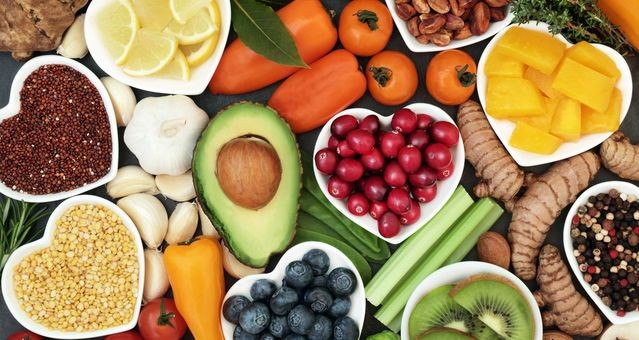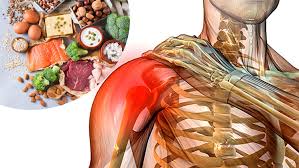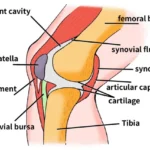summary
Theroleofnutritioninhealingarminjuriesisasignificantyetoftenoverlookedaspect ofrecovery.Arminjuries,whichcanrangefromfracturesandmusclestrainstotendon injuries and stress fractures, are common amongindividuals engaged inphysical activities.Thehealing process for these injuries canbe complex, involving multiple stagesthatrequirespecificnutritionalsupporttooptimizerecoveryoutcomes.Proper nutritioncanenhancetissuerepair,reduceinflammation,andpreventcomplications, making it anessential componentof effective injurymanagement.
Fractures, tendinitis, muscle strains, and stress fractures each have unique healing mechanisms thatcan be supported by targeted nutritionalstrategies.For instance, fractures follow a predictable patterninvolving inflammation, soft and hardcallus formation, and boneremodeling, allof which benefit from nutrients like calcium, vitaminD,andprotein.Similarly,muscleinjuriesandtendoninjuriescanseeimproved recovery rates withadequate proteinintakeandanti-inflammatory nutrients suchas omega-3 fatty acidsand antioxidants.The role ofspecific aminoacids and collagen insupportingtissuerepairalsounderscorestheneedforacomprehensivenutritional approach.
Nutritionis criticalnot only during the acute phases of injurybut also throughouttheentirehealingprocess,includingthehemostasis,inflammatory,proliferative,and maturationphasesof woundhealing.Eachstagedemandsauniquesetofnutrients to facilitate tissue regeneration and repair.For example, vitamin K isvital for blood clotting during hemostasis, while vitamin C, zinc, and omega-3 fatty acids support immune function and inflammation control during theinflammatoryphase.During the proliferative and maturation phases, proteins and micronutrients like vitamin A, copper, and seleniumare crucial for collagen synthesis andtissue strengthening. Understanding thenutritional needs ofdifferent structures within thearm—bones, muscles, and connective tissues—can significantly enhancethe recoveryprocess. Bones require calciumand vitamin Dfor mineralization, while muscles need ad-equate proteinfor regeneration.Connective tissues, richin collagen,benefit from vitamin C andprotein tosupport repairand reduce inflammation.By incorporatinga balanced dietrich in essential nutrients, individuals recovering from arminjuries can expedite their healingprocess and reducethe riskof further complications, underscoring thepivotal role that nutrition plays in injury recovery.
Types ofArmInjuries
Arm injuriesare prevalent among individualsengaged in variousphysical activities andcanrangefrommildtosevere.Commonexercise-inducedinjuriesincludethose affecting muscles and othersoft tissues, often examined through the eccentric exercisemodel,whichleadstomusclesorenessandlossofmusclefunction.Here, we delve into some specifictypes ofarm injuries, their characteristics, and their healing processes.
Fractures
Bone fractures in the arm follow a predictable healing pattern, beginning withan inflammatoryresponse that attracts plasma and inflammatory cells to the injury site, helping clear damaged tissueand promote revascularization.The healing process progresses through several stages, including softcallus formation,hard callus formation, andfinally boneremodeling, which cantake several years
Tendon Injuries
Tendon injuries, such astendinitis andtendinosis, often resultfrom repetitive strain orsuddentrauma.Theseconditionsleadtoinflammation,pain,andreducedmobility in the affected arm.Nutritional strategies, including adequate protein intake, can support the healing oftendon injuriesby promoting tissue repairand reducing inflammation
Muscle Injuries
Muscle injuries inthe arm,such as strains and tears, are typicallycaused by overuse or acutetrauma.These injuries canresult insignificant muscle soreness and a reductionin muscle function.Immobilization due to muscle injuryleads to rapid musclemasslossanddecreasedstrength.Thisphenomenonoccursprimarily becauseofaglobaldeclineinmuscleproteinsynthesisand”anabolicresistance,”a reduced response toanabolic stimuli like amino acids and insulin
StressFractures
Stress fractures occur due to repetitive stress on thebone, leading to small cracks that candevelop into more significant injuriesif left untreated.Healing stress fracturesinvolvesrestandnutritionalsupport,focusingonnutrientslikecalciumand vitamin D to strengthenthe bonestructure.
Basic Nutritional Principles for Healing
Focus onNutrient-Rich Foods
Choosingfoodsrichinessentialnutrientsiscrucialforeffectivehealingandrecovery. Thesefoodsprovidethevitamins,minerals,andantioxidantsnecessaryforthebody torepairitself.Incorporatingavarietyofnutrient-densefoodsintoyourdietcanac-celeratethehealingprocessandenhanceoverallhealth.Forinstance,leafygreen vegetables like spinach, kale, and Swiss chard are packed with vitamins, minerals, and antioxidants that support healing.Additionally, eggs offer high-quality protein and essential aminoacids necessaryfor tissue repair.
Healing Foods for Recovery
During therecovery period,it isvital toconsume foods that aid the healing process. Foodsrichinzinc,suchasbeef,oysters,wholegrains,andlegumes,playasignificant role in wound healing and tissuerepair.Calcium-rich foods like milk, cheese, yogurt, and green leafy vegetables such as kale and spinachare essential for bone growthandrepair.Includingamixoffruitsandvegetablesinyourdietensuresyou receive a wide range of nutrients, antioxidants, and fiber, all of which contribute to better health and recovery.
Importanceof Phytonutrients
Phytonutrients, or phytochemicals, are compounds produced by plants that have anti-inflammatory propertiesand can aidin the recovery process.Foods rich
in phytonutrients include colorfulfruitsand vegetables, legumes, nuts, tea, cocoa, whole grains, and many spices.Ensuringthat 50-75%of your diet is plant-based and includes healthy fats and adequate protein can helpyou meet your nutritional needs withoutrelying heavily on supplementation.
Stay Hydrated
Maintaining proper hydration is essentialfor healing and recovery, particularly in wound care.Adequate water intake supports various bodilyfunctions andaidsin the healingprocess.It is recommendedto consume at least8 cups ofwater per day and incorporate hydrating foods into your diet.Consulting with a healthcare professional about nutritional supplements can further support your recovery.
Pay Attention to Calorie Intake
Monitoring calorieintake is criticalfor healing injuries.The body requiresadditional energytorepairtissues,fightinfections,andfacilitateoverallhealing.Itisimportant toconsultwithadoctorordietitiantodeterminetheappropriatecalorieintakebased
on the severityof the injury andactivityleve.During recovery, your body might need more energy than usual, soconsuming foods richin carbohydrates, proteins, and healthy fats is recommended.
Role ofMacronutrientsand Micronutrients
Proper nutrition,encompassing both macronutrientsand micronutrients, is crucial for healing.Proteins, which are composed ofamino acids, play a significant rolein repairingandbuildingbodytissues.Carbohydratesprovidethenecessaryenergy for moderate to intenseactivities andsupport the body’s inflammatory responseand cellular functions.Micronutrients like vitamins Aand C, as well as minerals suchaszinc,areessentialforcellular-levelhealing.Additionally,compoundslike curcumin found in turmeric may have beneficial healing properties.
Byfollowingthesenutritionalprinciplesandconsultingwithhealthcareprofessionals for personalized advice, individuals can optimize their diet tosupport the healing process and ensure better recoveryoutcomes.
TheRoleofNutritioninDifferentStagesofWound Healing
Proper nutrition plays a critical rolein supportingthe body’s healing processacross variousstagesofwoundhealing.Eachstagedemandsspecificnutrientsandenergy to facilitate tissue repairand regeneration effectively.
Hemostasis
Theinitialphaseofwoundhealing,knownashemostasis,involvestheclosureofthe wound through blood clotting.During thisphase, blood vessels constrict to restrict blood flow, and platelets adhere to thewound site to form aclot, reinforced by
fibrin threads.Although this stageoccurs rapidly, adequate nutrient intake, especially proteins, and vitamins likeVitamin K,is essential to supportefficient clot formation and prevent excessive bleeding.
Inflammation
Following hemostasis, the wound enters the inflammatory phase, characterized by redness, warmth, swelling, and discomfortaround thewound area.This phase is crucial for controlling bleeding and preventing infection aswhite blood cells remove debris and bacteria fromthe wound site.Nutrients such asVitamin C, zinc, and omega-3 fatty acids are vital during this stage asthey support immune function and reduce inflammation, aiding the body’s defense mechanisms.
Proliferation
Theproliferationphasemarksthevisibleonsetofhealing,wherenewtissue,known as granulation tissue, begins to form.This stageinvolves dermaltissue rebuilding and new blood vessel development to supply nutrientsand oxygen to the healing area.Proteins, amino acids, and micronutrientslikeVitamin Aand copper
playasignificantroleincollagenformation,tissuerepair,andangiogenesis,ensuring robust and efficient wound closure.
Maturation
The finalstage ofwound healing, maturation, can last several months.During this phase, collagen is remodeled fromtype III to type I,and the wound fully closes.The newly formed tissue continues to strengthen and regainelasticity.Adequate protein intake and nutrientslikeVitamin Eand selenium are crucial for collagen remodeling and achieving optimal tensile strength in thehealed tissue.A balanced diet rich in thesenutrients can significantly enhance the overall healing process and minimize the risk ofcomplications.
Understandingthenutritionalneedsateachstageofwoundhealingemphasizesthe importanceofanutrient-richdiettosupportefficientandeffectiverecoveryfromarm injuries.
SpecificNutrientsfor Arm Injury Recovery
Proper nutrition plays a crucial role inaccelerating recoveryfrom arminjuries by providing essential nutrients that aid intissue repairand reduce inflammation.
Omega-3 Fatty Acids
Omega-3fattyacidsarebeneficialforreducinginflammationandsupportingmuscle protein synthesis, which can protect againstmuscle loss and aid in recovery. Sources include fatty fish, flaxseed,canola oil,and walnuts.However, it is importantto balance omega-3intake carefully, as excessive supplementation may impair wound healing.
Collagen
Collagenisthemajorstructuralproteininthebody,accountingfor25-35%ofourtotal proteincontent.Itservesasthe”glue”thatholdsourtissuestogetherandisvital for maintaining thehealth of bones, tendons, connective tissues, and muscles. Afteran arm injury, increasing collagen intake can supportthe healingof strained, sprained, or otherwise injured tissues.
Collagencontainstheaminoacidsprolineandglycine,whicharenaturalanti-inflam-matories andboost theimmune system, facilitating quicker recovery.Sourcesof collagen includegrass-fed beef bone broth, organic chicken bone broth, collagen peptides (hydrolyzed collagen supplements), and gelatinpowder.
Gelatin
Gelatin,derivedfromboilinganimalbones,isessentiallycollagenthathasbeenless aggressively processed.It turns into a gel when mixed with liquid andis often used in desserts and tothicken gravies.Gelatin can be a convenient way to increasecollagenintakeandsupportarminjuryrecoverybypromotingtissuerepair and reducing inflammation.
Amino Acids
Supplementing specific amino acids canfurtherstimulate collagen depositionand aid in thehealing process.
Protein
Injuryrepairdemandsahigherproteinintake.Athletesrecoveringfromanarminjury should aim for 1.5-2.0 grams of protein per kilogram of body weight, significantly higher than the usual 0.8grams per kilogram.Consistent protein intake helps ensure that the body hasthe necessary buildingblocks for tissue repair and muscle maintenance.
VitaminC
Vitamin Cis essential for collagen synthesis andthe formationof bones, skin, and connective tissues.It enhances neutrophil migration, increasesangiogenesis, and acts asan antioxidant, all of whichare crucial for effective healing.Foods rich in vitamin C include cantaloupe, citrusfruits, kiwi, andmango.
Overall Caloricand Nutrient Balance
Ensuringadequatetotalcalorieintakeandmaintainingabalancedmacronutrientpro-fileareessentialforoptimalrecovery.The nutritionalneedsmayvarydepending on the phaseof injury and theathlete’s nutritionalstatus at the time ofinjury. During theacute phase, the focus should be on preventing muscle mass loss while promoting tissuehealing.During rehabilitation, thegoal shiftsto promotingstrength gains and increasing muscle hypertrophy.
By incorporating these specific nutrientsinto theirdiet,individuals recovering from arminjuriescansignificantlyenhancetheirhealingprocessandreturntotheirnormal activities morequickly.
Nutritional Strategies DuringDifferent Phases of Healing
Effective nutritionplays a vital rolein thehealing process ofarm injuries, helping to expedite recovery, reduce complications, and strengthen the body.The healing process is divided into several overlapping phases, each of whichbenefitsfrom specificnutritionalstrategies.Understandingthenutritionalneedsduringeachphase can enhance theoverall healing process.
Remodeling Phase
The remodeling ormaturation phase can lastfrom 21days up to 2years, involving ongoingcollagensynthesisandtissuestrengthening.CalciumandvitaminDbe-comeincreasinglyimportantduringthisphase,especiallyiftheinjuryinvolvesbones. Calcium-rich foods, including milk, cheese, yogurt, and leafygreens, support bone growthandremodeling.Ensuringadequatehydrationisalsoessentialthroughout this phase, as water is vital for nutrient transportand tissue health.
General NutritionalTips for All Phases
Throughout allphases of healing, maintaininga balanced dietrich in vitamins, minerals, and antioxidants is crucial.Consuming a variety of nutrient-dense foods ensuresthebodygetsallthenecessarycomponentsforeffectiverecovery.Itisalso importantto stay hydrated, with arecommendation of at least 8 cupsof water per day to supportoverall healing and recovery.
Always consult a healthcare professional or dietitian before making significant changes to your diet, as they can provide personalized advice tailored to your specific needs.This approach ensuresthat your nutritional strategies align with your recoverygoals and healthstatus.
Hemostasis Phase
The hemostasisphase begins immediatelyafterinjury andlasts only 5-10minutes. During thisphase, the bodyattempts to stop bleeding through vasoconstriction and clot formation,involving platelets andfibrin.Whilethis phaseis short, ensuring thebodyhasadequatelevelsofvitaminKisessential,asitiscrucialforbloodclotting. Leafy green vegetables, such as spinach andkale, are excellent sources of vitamin K and shouldbe included in the diet
Inflammatory Phase
Theinflammatoryphasefollowshemostasisandtypicallylasts4-6days.Thisphaseis characterizedbyerythema,warmth,edema,andpain,asthebodysendsneutrophils and macrophages toclean out the wound.Duringthis phase, consuming
anti-inflammatory foods can help manage excessive inflammation while supporting thenecessaryinflammatoryresponseforhealing.Omega-3fattyacidsfoundinfatty fish, flaxseeds, and walnuts are recommended to curb inflammation.Additionally, foods rich in antioxidants, such as fruitsand vegetables, can assistin reducing oxidative stress
Proliferative Phase
Lasting from6 to 21days, the proliferative phase is marked by the development
ofgranulation tissue and epithelialization.This phase requiresa nutrient-dense diet tosupport the formation of new tissues.Protein isparamount during this phase to aid incollagen deposition andgranulation tissue formation.High-quality protein sources, such as eggs, lean meats, and legumes, are highly beneficial.Zinc is alsocriticalfortissuerepair,with foodslikebeef, oysters,wholegrains,andlegumes being excellent sources
ImpactofNutritiononHealingSpecificStructures in theArm
Nutritionplays a crucial role inthe healingof variousstructureswithin thearm, including bones, muscles, and connective tissues.Each of these structures has specific nutritional needsthat facilitate optimalrecovery.
Bone Healing
Boneisthehardestconnectivetissueinthebody,providingprotectionandstructural support.Its matrix consists mainly ofcollagen fibersembedded in a mineralized ground substance containing hydroxyapatite, a form ofcalcium phosphate.Both the organic (collagen) and inorganic(mineral) components contribute to bone’s unique properties.Without collagen,bones would be brittle, and without mineral crystals, they would lack sufficientsupport.Nutrients like calcium and vitamin D are criticalformaintainingbonestrengthandfacilitatingthebonehealingprocess.Bone tissue is highlyvascularized, allowing it to recover from injuries relatively quickly compared to cartilage
Muscle Repair
Musclerepairfollowinganarminjuryrequiresawell-balancedintakeofproteinsand calories.Proteinsprovidethenecessaryaminoacidsformuscletissueregeneration and repair.During the acutephase of injury, thenutritional goal is toprevent muscle masslosswhileallowingthetissuetoheal.Rehabilitationphasesfocusonpromoting strength gainsand muscle hypertrophy.Adequate protein intake supports the body’s ability torebuild muscle fibers and restore muscle function.
ConnectiveTissue Recovery
Connective tissues, including tendonsand ligaments, are rich in collagen, a protein essentialforprovidingstructureandsupport.Collagensynthesisisheavilydependent on the intake of specific nutrients, including vitaminC and protein.Thesenutrients help replace damaged tissue with new tissue, thus expediting the wound healing process.Furthermore, an adequate caloricintake is necessaryto supply the energy required for tissue repair and to prevent complicationsthat canarise from insufficientnutrition
Micronutrients
Inadditiontomacronutrients,severalmicronutrientsarevitalforhealingarminjuries. Zinc, for example, plays a significant rolein forming enzymes andproteins, building new cells, and supportingthe immune system, allof whichare crucial for wound healing.Vitaminsand minerals, such as Bvitamins and iron, also contribute to energyproductionandoverallcellularhealth,furtheraidingtherecoveryprocess






